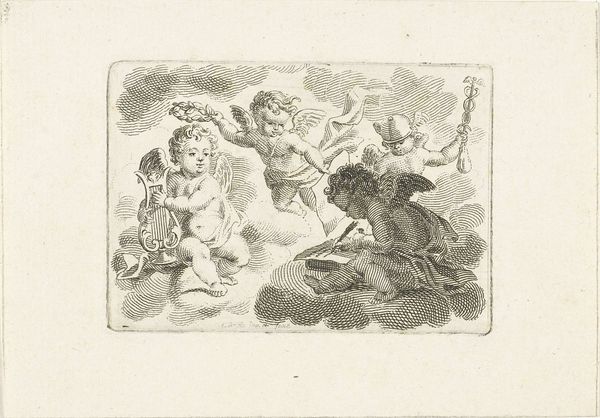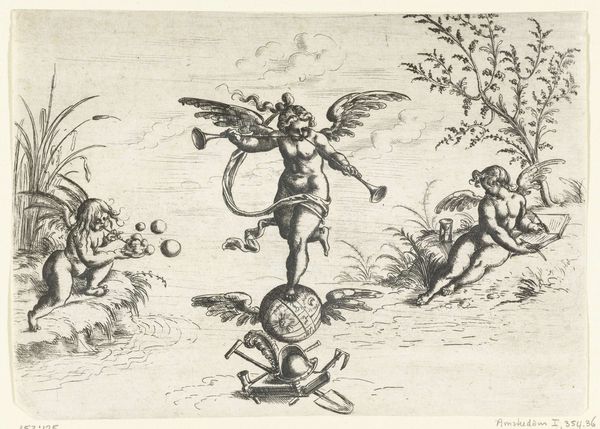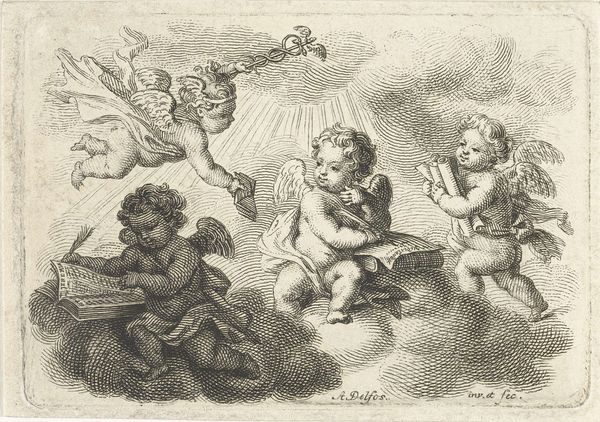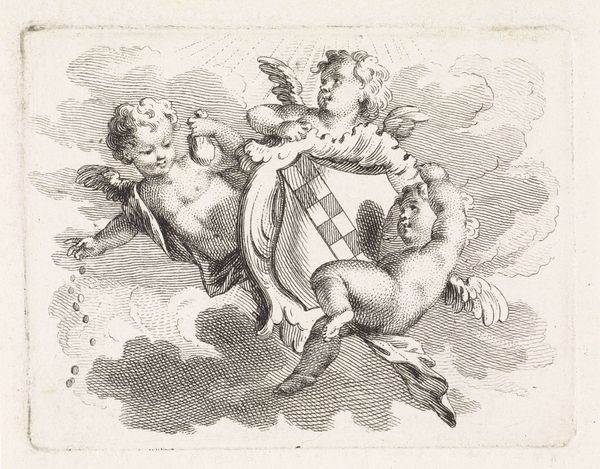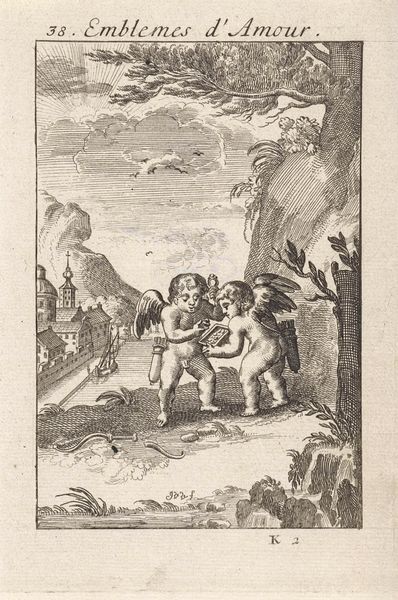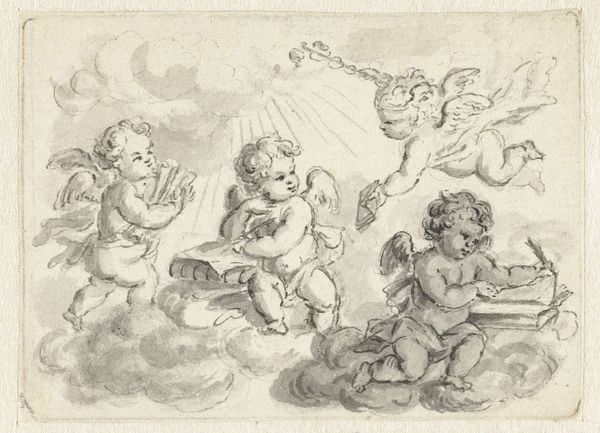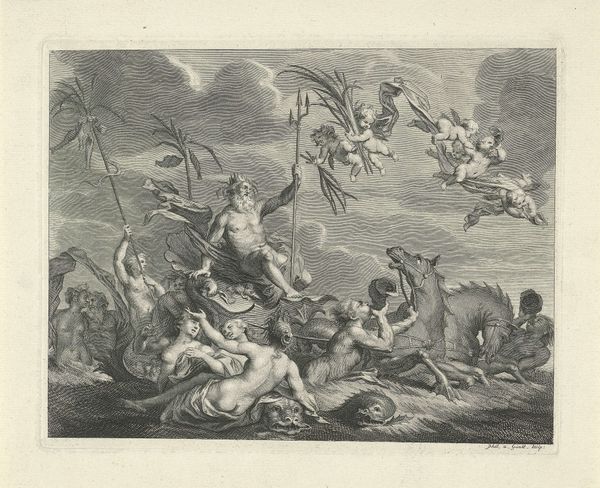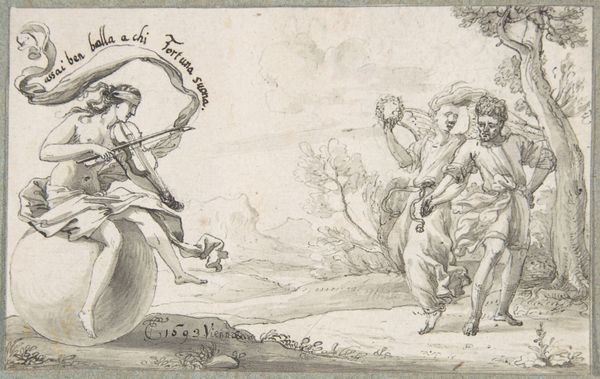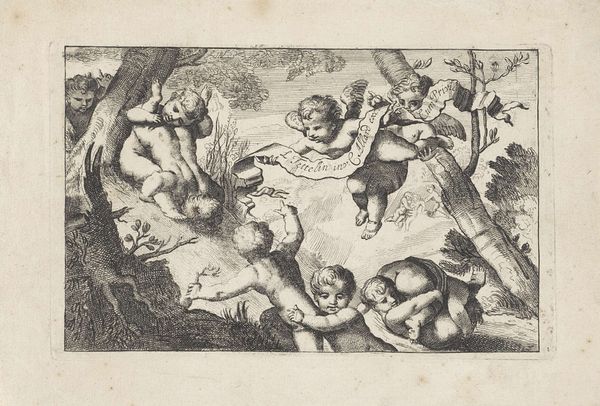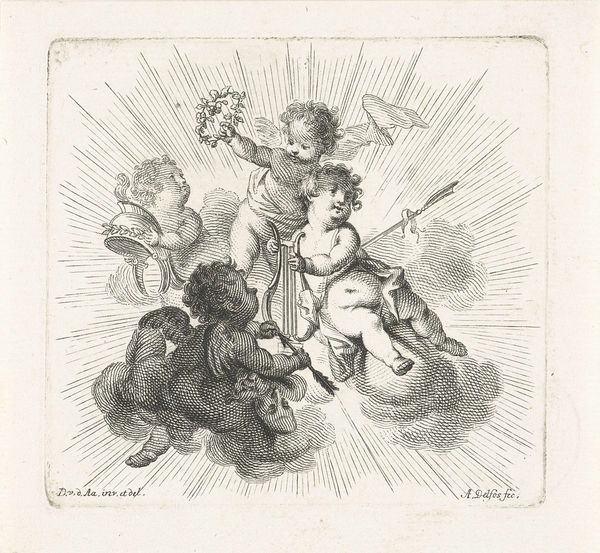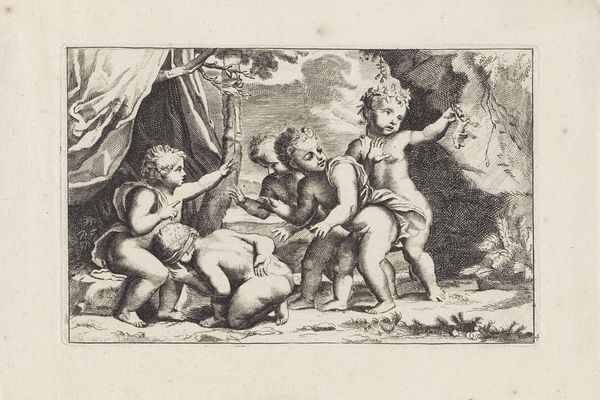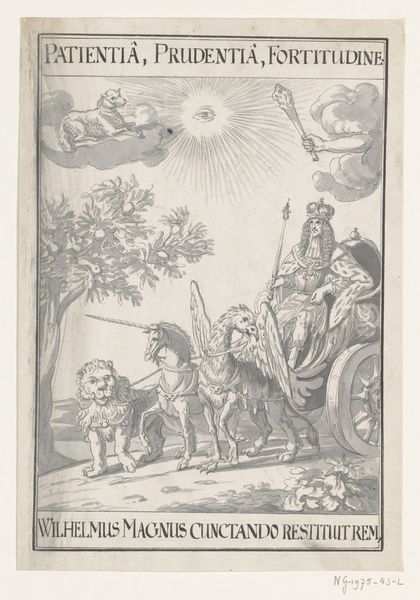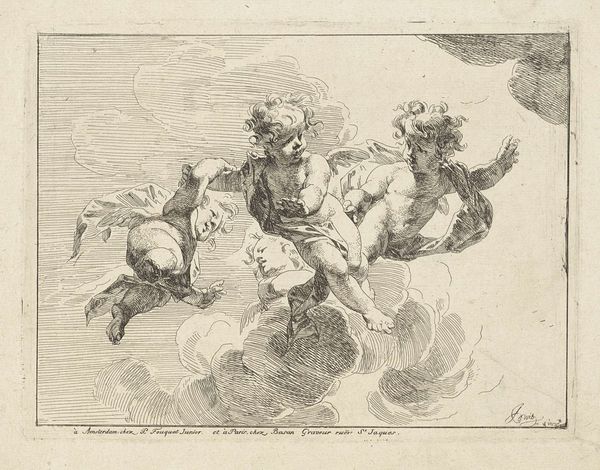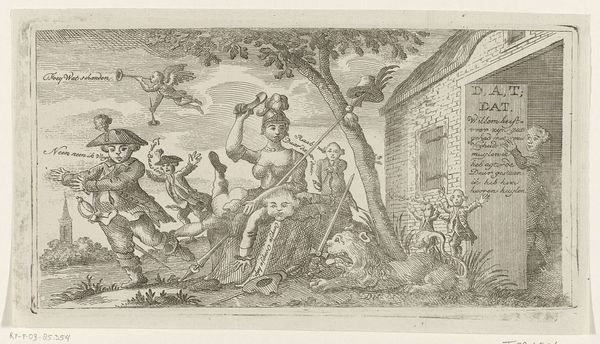
drawing, ink, engraving
#
drawing
#
allegory
#
figuration
#
11_renaissance
#
ink
#
engraving
Dimensions: height 59 mm, width 85 mm
Copyright: Rijks Museum: Open Domain
Curator: Let's consider this fascinating engraving by Abraham Delfos, "Allegory of the Arts and Sciences with Four Putti," made sometime between 1741 and 1820. Editor: My initial feeling is one of lightheartedness. The playful putti amidst the clouds evoke a sense of carefree exploration, although it's rendered in quite a rigid style. Curator: Delfos worked during a period where the Rococo style was transitioning to Neoclassicism. It's a fascinating cultural moment, with the influence of the Enlightenment emphasizing reason and knowledge reflected in the choice of subject matter. The engraving was probably produced to celebrate and promote the value of the arts and sciences. Editor: Absolutely, but look at how this celebration is packaged. These aren't just abstract ideals; they're embodied by these rather plump cherubs. How are ideas of childhood, innocence, and perhaps even divine inspiration, being mobilized to legitimize these fields of study? And who exactly is this art *for*? Curator: It's certainly about creating an image that resonated with the elite patrons of the arts and sciences. Think of the scientific societies emerging at the time; representing knowledge as divinely inspired and guided could lend them further prestige. It speaks to power and legitimacy within that framework. The classical allegorical elements are typical of the public role of art in that period, as it reinforced hierarchies. Editor: Yes, these images actively *constructed* social value. I'm wondering too about access. Engravings allowed for the dissemination of ideas, making images more broadly available. How does it affect the understanding of these themes when the work shifts from an oil on canvas to something reproducible? Does it flatten the nuances or democratize the content? Curator: Both perhaps? An engraving could reach a wider audience but in a controlled way through official channels like academic institutions or printed volumes. The content would always reflect the ideologies and biases of those producing and circulating them. Editor: It’s a potent reminder that even seemingly innocent depictions are deeply embedded in specific social contexts. The symbolism itself, while possibly beautiful, is never politically neutral. Curator: A vital point. And situating such artworks in the narrative allows us to critically examine not just art history but its active role in historical power dynamics. Editor: Exactly. I’m glad we brought a broader lens to consider its production and influence.
Comments
No comments
Be the first to comment and join the conversation on the ultimate creative platform.
